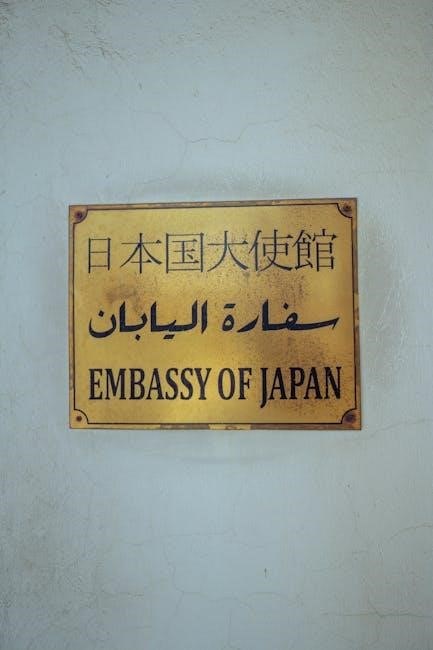The Garima Gospels are ancient Ethiopian manuscripts, dating back to the 6th century, considered the oldest surviving Gospel books in Ge’ez. They contain colorful illustrations and are a cornerstone of Biblical scholarship and early Christian art.
The Oldest Surviving Ethiopian Gospel Books
The Garima Gospels are recognized as the oldest surviving Ethiopian Gospel books, dating back to the 6th century. Comprising two volumes, Garima 1 and Garima 2, these illuminated manuscripts are written in Ge’ez, the ancient liturgical language of Ethiopia. They are preserved on goat skin and adorned with vibrant illustrations, making them masterpieces of early Christian art. These manuscripts predate other famous illuminated Gospel books, such as the Rabbula Gospels, and provide invaluable insights into the artistic and religious traditions of the Aksumite Kingdom. The Garima Gospels contain approximately 400 pages each, offering a unique window into the early development of Biblical texts in Ethiopia. Their intricate canon tables, designed by Eusebius of Caesarea, highlight the textual organization of the Gospels. As the oldest complete illustrated Christian manuscripts, they are not only a treasure of Ethiopian culture but also a significant resource for Biblical scholarship, shedding light on the evolution of Gospel narratives and early Christian art.
Significance of the Garima Gospels in Biblical Scholarship
The Garima Gospels hold immense significance in Biblical scholarship as they provide rare glimpses into the textual and artistic traditions of early Christianity. As the oldest surviving Ethiopian Gospel books, they offer insights into the transmission of Biblical texts in the Aksumite Kingdom. Their canon tables, devised by Eusebius of Caesarea, are crucial for understanding the early development of Gospel narratives. The manuscripts also contain unique linguistic features, suggesting that the Ethiopian translation of the Bible may be older than previously believed. Scholars value these texts for their potential to illuminate lost late antique luxury Gospel books and art. Additionally, the Garima Gospels bridge the gap between Eastern and Western Christian traditions, showcasing a blend of influences in their illustrations. Their study has profound implications for textual criticism, art history, and the history of Christianity in Africa, making them an invaluable resource for researchers worldwide.

Historical and Cultural Context
The Garima Gospels originated in the Aksumite Kingdom, a cradle of early Christianity in Ethiopia. They reflect the cultural and religious synthesis of the region, blending local traditions with Christian influences from the Mediterranean.
The Origins of the Garima Gospels in the Aksumite Kingdom
The Garima Gospels trace their origins to the Aksumite Kingdom, a powerful empire in Ethiopia during the 1st millennium CE. This period was marked by the rise of Christianity in the region, which became a central element of the kingdom’s identity. The manuscripts are believed to have been created between the 5th and 7th centuries, a time when Aksum was a hub of cultural and religious exchange. The kingdom’s strategic location along trade routes connecting Africa, Arabia, and the Mediterranean facilitated the introduction of Christian texts and artistic styles. The Garima Gospels reflect this cultural synthesis, with their illuminated pages showcasing a blend of local Ethiopian traditions and influences from Byzantine and early Christian art. Their creation is attributed to the scribes and artists of the Aksumite period, who translated and illustrated the Gospels in the Ge’ez language, establishing a legacy that would endure for centuries.
The Role of the Garima Gospels in Early Christian Art and Manuscript Tradition
The Garima Gospels hold a significant place in the history of early Christian art and manuscript tradition. As the oldest surviving illuminated Christian manuscripts, they provide invaluable insights into the artistic and theological developments of the time. The manuscripts are adorned with vibrant illustrations, including intricate canon tables and decorative motifs, which reflect a blend of Byzantine and early Christian artistic styles. These elements highlight the cultural exchanges between Ethiopia and the broader Mediterranean world during the late antique period. The Garima Gospels also exemplify the tradition of manuscript production, showcasing the technical skill and artistic craftsmanship of their creators. Their survival offers a rare glimpse into the lost art of luxury gospel books from the 5th to 7th centuries, making them a cornerstone for studying the evolution of Christian art and manuscript traditions. Their influence extends beyond Ethiopia, contributing to the broader understanding of early Christian visual culture.
The Language and Script of the Garima Gospels

The Garima Gospels are written in Ge’ez, an ancient Ethiopian language that serves as the liturgical tongue of the Ethiopian Orthodox Church. The manuscripts employ the traditional Ge’ez script, known for its distinctive syllabic writing system. This script, still used today in Ethiopia, is central to the cultural and religious identity of the region. The Garima Gospels are remarkable for being the oldest surviving books written in Ge’ez, providing critical insights into the early development of Ethiopian Christianity. The texts are unique in their preservation of Biblical narratives and their linguistic purity, making them invaluable for scholars studying the evolution of Christian literature in Africa. The language and script of the Garima Gospels also underscore their role as a bridge between ancient Mediterranean traditions and the distinctive cultural practices of Ethiopia. Their study has significantly advanced our understanding of early Christian textual transmission and linguistic heritage.
The English Translation of the Garima Gospels
The English translation of the Garima Gospels provides unparalleled access to these ancient texts, enabling global readers to explore their theological and historical significance. This translation preserves the original Ge’ez manuscript’s integrity while making it accessible to modern audiences.

The Process of Translating Ancient Ge’ez Texts into English
Translating the Garima Gospels from Ge’ez to English involves meticulous scholarship and linguistic expertise. Specialists first analyze the ancient script and language, ensuring accuracy in conveying the original meaning. They cross-reference historical contexts and compare with other Biblical texts to maintain authenticity. Advanced digital tools aid in deciphering faded or damaged sections of the manuscripts. The translation team collaborates to produce a faithful yet accessible English version, preserving the theological and cultural richness of the Ge’ez text. This process bridges centuries, connecting modern readers with a 1,500-year-old manuscript, while respecting its historical and religious significance. The result is a translation that honors the original while making it understandable to contemporary audiences, ensuring the Garima Gospels’ enduring legacy.

Key Features of the English Translation of the Garima Gospels
The English translation of the Garima Gospels is a landmark achievement, offering unparalleled access to these ancient texts. It faithfully captures the theological and cultural essence of the original Ge’ez manuscripts, ensuring linguistic accuracy and historical fidelity. The translation includes detailed annotations, explaining complex theological concepts and historical references, making it invaluable for scholars and general readers alike. High-resolution images of the illuminated pages are often included, showcasing the manuscripts’ artistic brilliance. The translation retains the poetic and liturgical style of the original, preserving the spiritual depth of the Gospels; Additionally, it provides insights into the Aksumite Kingdom’s influence on early Christian art and literature. The English version is widely regarded for its clarity and scholarly rigor, making it a vital resource for understanding early Christian history and Ethiopian heritage.
Accessibility of the Garima Gospels English Translation in PDF Format
The English translation of the Garima Gospels is widely accessible in PDF format, enabling scholars and enthusiasts to explore these ancient texts with ease. The PDF format preserves the original manuscripts’ visual and textual integrity, including vibrant illustrations and canonical tables. This digital version is available through various academic platforms and libraries, ensuring global accessibility. The translation is often accompanied by high-resolution images of the illuminated pages, allowing readers to appreciate the artistic and historical significance of the manuscripts. Additionally, the PDF format makes it portable across devices, facilitating research and study. Efforts by scholars and institutions to digitize the Garima Gospels have made this invaluable resource available to a broader audience, bridging the gap between ancient heritage and modern accessibility. This initiative has been praised for its role in promoting Biblical scholarship and preserving Ethiopia’s cultural legacy for future generations.
